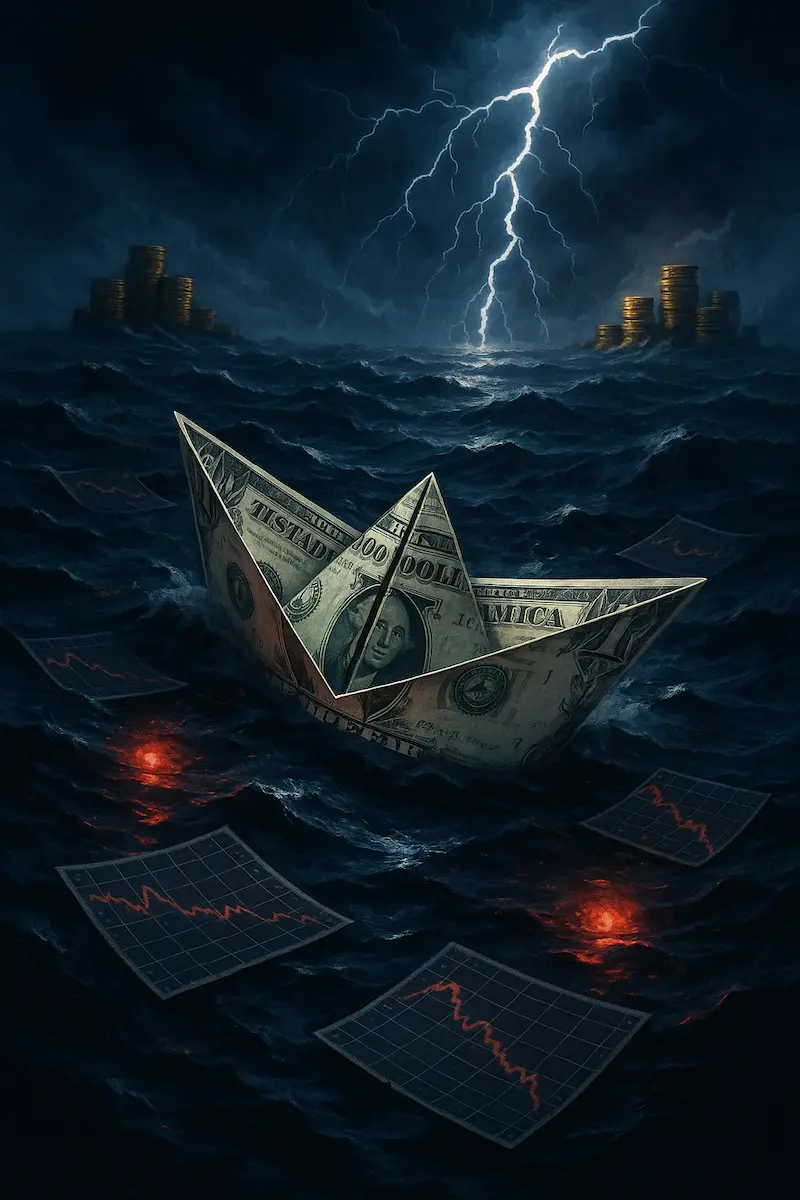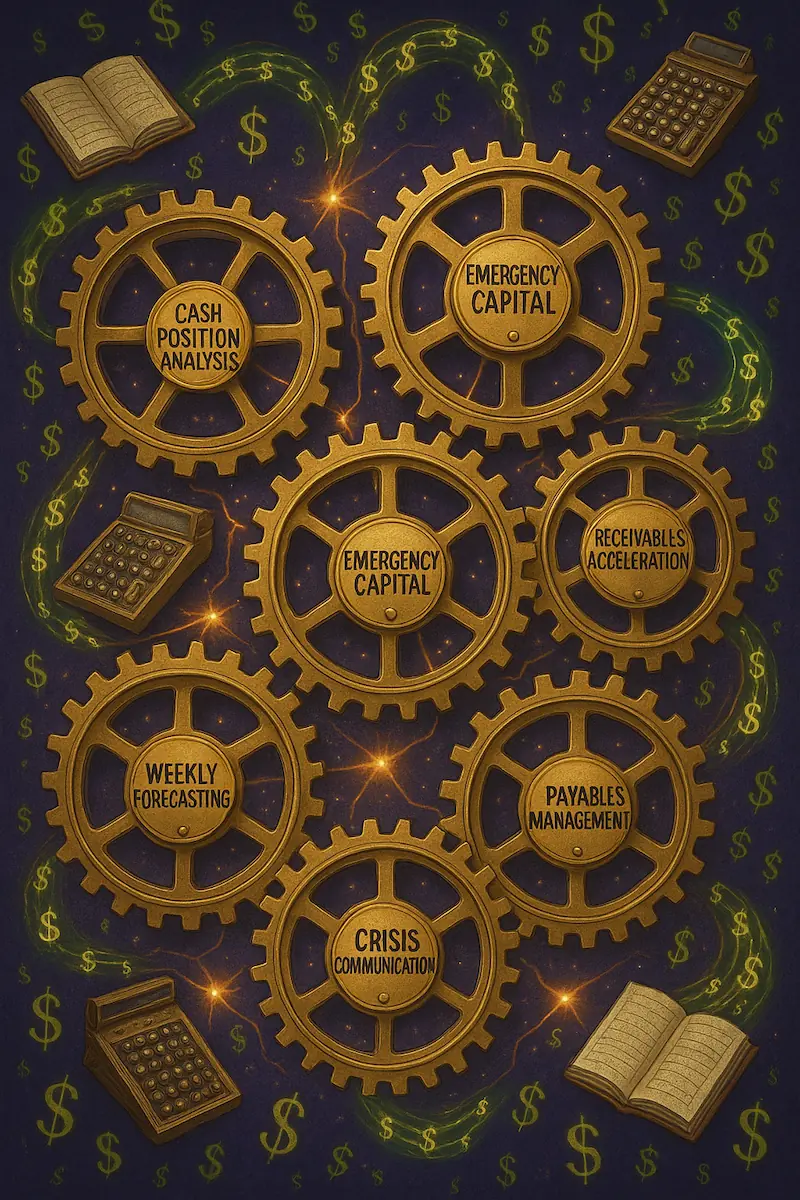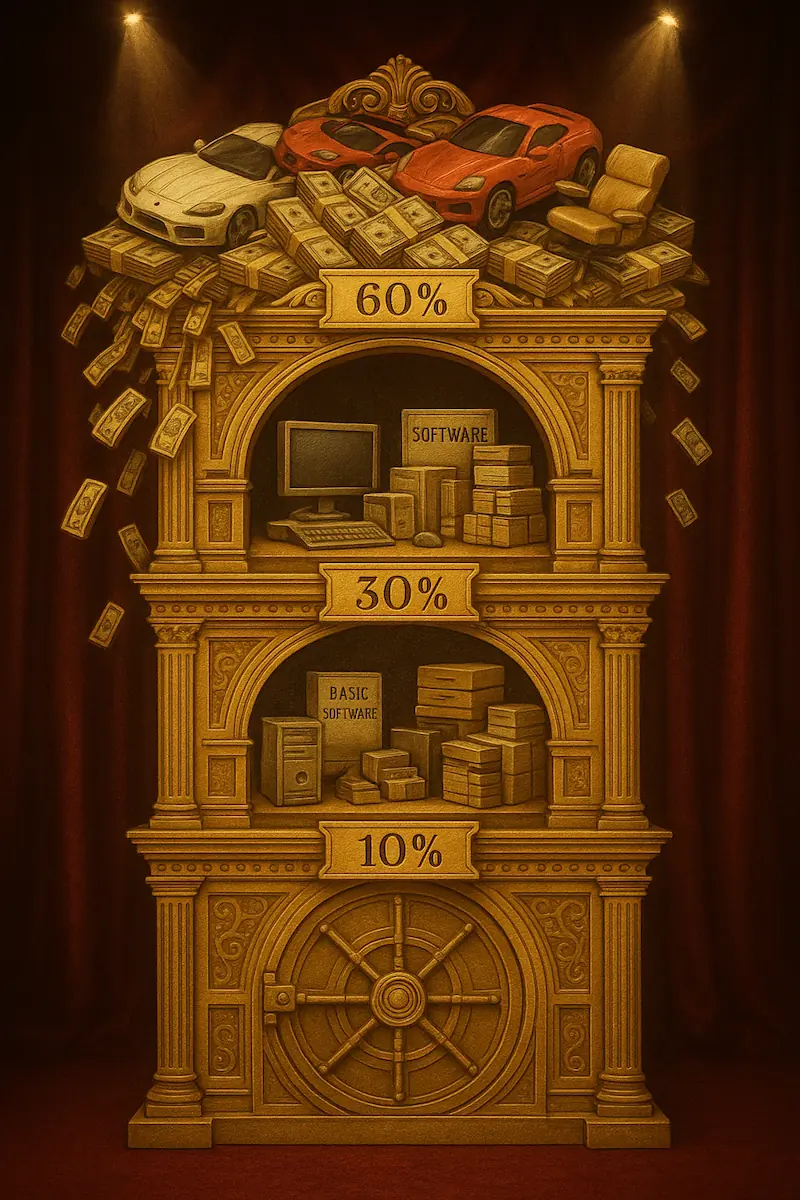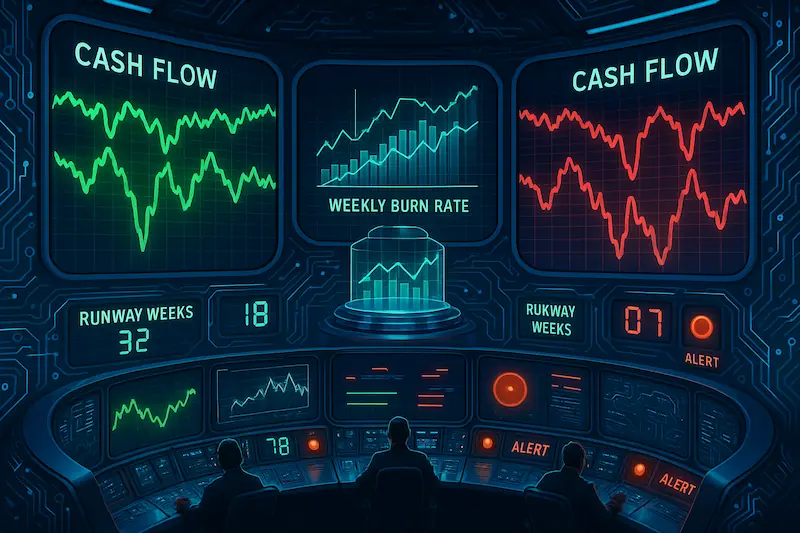Table of Contents
- 1. The Wake-Up Call: When a Cash Flow Crisis Hits 📉
- 2. Know Where You Stand: Calculating Your True Cash Position 🧾
- 3. Burn Rate Triage: Cut the Fat, Not the Core ✂️
- 4. Receivables Rescue: Accelerating Incoming Cash 💸
- 5. Delay Without Damage: Managing Payables Strategically 🕰️
- 6. Emergency Cash Options: What to Do When the Well Runs Dry 🚰
- 7. Weekly Forecasting: Switching to Crisis Mode Planning 📆
- 8. Crisis Communication: What to Say to Teams, Investors, and Clients 🗣️
- 9. Rebuilding Stronger: Post-Crisis Cash Flow Strategy 🛠️
- 10. Ready to Turn Your Cash Flow Crisis Into a Comeback Story?
- 11. FAQ's
Because you can't pitch your way out of an empty bank account.
The Wake-Up Call: When a Cash Flow Crisis Hits 📉
The moment a startup runs out of cash is rarely a cinematic one. There's no dramatic siren or blinking red light. Instead, it often starts with a missed invoice here, a silent investor there, and a growing unease that maybe, just maybe, you're not as liquid as you thought. By the time the realization hits, there are fewer options, the pressure is greater, and the stakes feel existential.
For many founders, this moment feels like failure. But at EIM, we've seen time and again that a cash flow crisis doesn't mean the end. It means it's time to shift gears, from building mode to survival mode, and eventually, to rebuild mode.
The worst thing you can do is freeze. The best thing? Get clear, get honest, and get moving. A cash flow crisis isn't just a financial problem. It's a time problem. The longer you take to act, the fewer decisions you control. That's why we help founders create a crisis protocol before the panic sets in. Because if you're already underwater, you don't need encouragement; you need oxygen.

Know Where You Stand: Calculating Your True Cash Position 🧾
Relying solely on your bank balance in a crisis can be misleading; it gives a false sense of security. You see six figures and think you're fine. However, when we ask founders what portion of that is already spoken for (payroll, vendor invoices, lease payments), they often don't know. And that gap between perception and reality is where disasters compound.
Phase 1 of The EIM 7-Phase Crisis Recovery Framework involves calculating your "Available Cash Position" (ACP); not just what's in the bank, but what's truly discretionary. Here's the formula we use:
True Available Cash = Bank Balance - (Committed Payroll + Outstanding Payables + Fixed Expenses + 15% Buffer)
One of the first things we help founders do in a crunch is calculate their true cash position down to the dollar. This isn't about pessimism, it's about precision.
Our cloud accounting solutions make this process systematic rather than ad hoc. You can't make strong decisions if you're still operating off the outdated number. Once you know exactly where you stand, you can begin to map your next move with intention instead of guessing your way through the fog.

Burn Rate Triage: Cut the Fat, Not the Core ✂️
When money gets tight, the instinct is to cut, and cut fast. But not all expenses are equal, and not all cuts are smart. Slashing costs without a strategy can leave your business technically alive but functionally paralyzed. You survive the crisis only to find out you've amputated the very systems you needed to recover.
Phase 2 of our framework introduces "Burn Rate Triage", separating expenses into three categories:
Core Revenue Drivers (protect at all costs)
Operational Essentials (maintain but optimize)
Growth Investments (pause)
We help founders create a burn map using the 60-30-10 rule: 60% of cuts from growth investments, 30% from operational optimization, and a maximum of 10% from core revenue drivers. This approach typically reduces burn rate by 35-50% while preserving the company's ability to recover.
The goal isn't to become leaner for the sake of it. The goal is to preserve your ability to grow again later. Our accounting solutions for startups include expense categorization tools that make this triage process systematic rather than emotional.

Receivables Rescue: Accelerating Incoming Cash 💸
It's easy to overlook the money you're already owed until it becomes the difference between staying afloat and shutting down. In a cash flow crunch, accounts receivable is no longer a back-office function. It's a front-line priority.
Phase 3 focuses on "Receivables Acceleration", our data shows that startups can typically recover 25-40% of overdue receivables within 30 days using our systematic approach. Most late payments don't stem from malice; they stem from friction. Clients forget invoices get buried, and payment processes stall.
The EIM Receivables Recovery System includes:
Week 1: Invoice audit and immediate follow-up on all 30+ day overdue accounts
Week 2: Direct founder-to-founder outreach for the largest outstanding amounts
Week 3: Payment plan negotiations and early-pay incentives
Week 4: Final notice with a clear collection timeline
Our bookkeeping services include automated receivables tracking that flags potential collection issues before they become crises.
Delay Without Damage: Managing Payables Strategically 🕰️
If receivables are the fast lane in, payables are the emergency brake on the way out. In a crisis, delaying outflows can buy you precious time, but only if you do it strategically.
Phase 4 of our framework involves "Strategic Payables Management." Vendors, suppliers, and partners are more flexible than founders expect, especially if you're upfront.
But here's the rule: negotiate before you're desperate. Once you're past due, the conversation shifts from partnership to collection, and that rarely ends well.
The EIM Payables Strategy includes:
Prioritize critical vendors (those essential to revenue generation)
Offer partial payments with clear timelines for the remainder
Request extended terms in exchange for guaranteed payment dates
Document all agreements to maintain trust and accountability
We help startups structure these conversations with clear repayment timelines and transparent communication. The goal is to keep relationships intact while extending your timeline to recover. Because in a cash crunch, time is liquidity, and earned goodwill can become capital.
Silence destroys trust. Transparency, on the other hand, opens doors to partnerships that can weather any storm.
Emergency Cash Options: What to Do When the Well Runs Dry 🚰
Sometimes you do everything right and still come up short. That's when emergency funding becomes part of the conversation. But founders often wait too long, paralyzed by pride or worried about how it'll look.
Phase 5 introduces "Emergency Capital Strategies", bridge loans, lines of credit, and factoring; these aren't signs of failure. They're tools. The key is knowing when to use them and under what terms.
Emergency funding options we evaluate with startups:
Asset-based lending: 60-80% advance rates on receivables
Revenue-based financing: 2-12% of monthly revenue, 6-24 months terms
Bridge convertible notes: 18-36 month terms, typically $50K-$500K
Merchant cash advances: Fast but expensive (factor rates 1.2-1.5x)
At EIM, we guide startups through urgent cash scenarios with a focus on short-term survival, not long-term dependency. Our financial statements solution ensures you have the documentation needed for fast funding decisions.
One rule always applies: this is a runway extender, not a growth strategy. Take what you need, stabilize operations, and move quickly to repair the underlying gaps. It's not about "raising your way out." It's about buying time to fix the engine while still flying the plane.

Weekly Forecasting: Switching to Crisis Mode Planning 📆
When cash is tight, a monthly forecast isn't enough. This is where you need to keep your hand on the cash pulse. i Phase 6 implements "Weekly Cash Velocity Tracking", shifting from monthly to weekly cash flow forecasting, the moment a crisis hits.
This is where founders shift from CEO to operator. Every inflow and outflow gets tracked in near real-time. Your goal isn't to predict, it's to anticipate. You're not trying to map the whole journey. You're just trying to avoid crashing into next week.
Our Weekly Crisis Dashboard tracks:
Cash-in: confirmed receivables, pending collections, new sales
Cash-out: non-negotiable expenses, strategic deferrals, emergency cuts
Net position: weekly burn rate vs. weekly runway
Action triggers: automatic alerts when cash drops below preset thresholds
Weekly forecasting isn't glamorous. It's spreadsheets, recurring calls, and line-by-line reviews. But it's also how you move from reactive to proactive. Founders who adopt this cadence often come out of a crisis sharper, more disciplined, and surprisingly grateful for the habit.
Because when your back's against the wall, precision becomes a superpower.

Crisis Communication: What to Say to Teams, Investors, and Clients 🗣️
Money problems become people problems fast if you don't talk about them.
Phase 7 of our framework focuses on "Crisis Communication Management." Founders sometimes default to silence, thinking it'll spare their team or maintain investor confidence. In reality, silence breeds uncertainty. And uncertainty kills morale faster than bad news ever could.
Your job in a cash crisis isn't to spin. It's to lead. That means communicating early, clearly, and often:
Internal Communication (Team):
Weekly all-hands with transparent runway updates
Clear action items for each department
Recognition of team efforts and sacrifices
A specific timeline for when the situation should improve
External Communication (Investors):
Monthly updates with a detailed recovery plan
Specific asks for help (connections, expertise, bridge funding)
Milestone-based progress reports
Clear success metrics and timelines
Client Communication:
Proactive updates on service continuity
Clear timelines for any delivery impacts
Additional value or concessions, where appropriate
Regular check-ins to maintain relationships
Say nothing, and the silence becomes your story. Speak strategy, and you will maintain control of the narrative.
Rebuilding Stronger: Post-Crisis Cash Flow Strategy 🛠️
Crisis management is reactive. Cash flow design is proactive. The best time to build a system is right after the previous one broke.
Once the immediate fire is out, we work with founders to build what we call the "Anti-Fragile Financial Framework", an operating model that gets stronger under stress rather than weaker. This isn't about preventing all future crises (impossible) but about building systems that give you more options when they inevitably arrive.
The framework includes:
13-week rolling cash forecasts (updated weekly)
Scenario planning for 50%, 75%, and 125% of projected revenue
Automatic expense scaling tied to revenue milestones
Diversified revenue streams to reduce single-point-of-failure risk
Cash reserves equal to 3-6 months of essential expenses
We don't want you living in crisis mode forever. We want you to install financial guardrails that keep you out of it. What started as a panic moment becomes the inflection point for a stronger company. Not leaner for lean's sake, but healthier. More resilient. More fundable. More ready for the next storm.
Ready to Turn Your Cash Flow Crisis Into a Comeback Story?
If you're facing a cash flow crisis or want to build anti-fragile financial systems before you need them, we can help. Our team is happy to help using the EIM 7-Phase Crisis Recovery Framework.
Book a free consultation today to discuss your specific situation and learn how we can help you navigate from crisis to stability, and ultimately, to growth.
Natasha Galitsyna
Co-founder & Creator of Possibilities
7+ years in startups
EIM "EIM Services" has partnered with multiple Canadian and International startups to deliver scalable, cost-effective, and solid solutions. Our expertise spans pre-seed to Series A companies, delivering automated financial systems that reduce financial overhead by an average of 50% while ensuring investor-grade reporting at a fraction of the cost of an in-house team. We've helped startups save thousands through strategic financial positioning and compliance excellence.
FAQ's
1. How quickly can we implement the EIM 7-Phase Crisis Recovery Framework? Most startups can complete Phases 1-3 (cash position analysis, burn triage, and receivables acceleration) within the first week. The complete framework typically takes 30-45 days to implement fully, but you'll see cash flow improvements within the first month.
2. What if our cash position is so dire that we can't wait for receivables to come in? This is where Phase 5 (Emergency Capital Strategies) becomes critical. We help founders evaluate same-day funding options, such as merchant cash advances or asset-based lending. While expensive, these tools can provide the immediate liquidity needed to execute the other phases of the framework.
3. Should we tell our team about the cash flow crisis, or will it hurt morale? Transparency builds trust, even in difficult times. Teams often sense problems before leadership acknowledges them. Our Crisis Communication Framework helps you share the situation honestly while maintaining confidence in your leadership and recovery plan.
4. How much should we cut our burn rate during a crisis? We typically see successful recoveries with 35-50% burn reduction using our 60-30-10 rule. However, the exact amount depends on your runway, revenue trajectory, and funding timeline. The key is cutting strategically rather than randomly.
5. Can this framework work for pre-revenue startups? Absolutely. Pre-revenue startups have some advantages—no receivables to collect, but also more flexibility in expense cutting. We adapt the framework to focus heavily on burn optimization and emergency funding while building systems for future revenue management.
6. How do we know when we're out of crisis mode? We define "crisis recovery" as achieving 3+ months of runway at current burn rate, with positive cash flow trend over 8 consecutive weeks. Most startups using our framework achieve this milestone within 3-6 months, depending on their starting position.


.webp)
.webp)